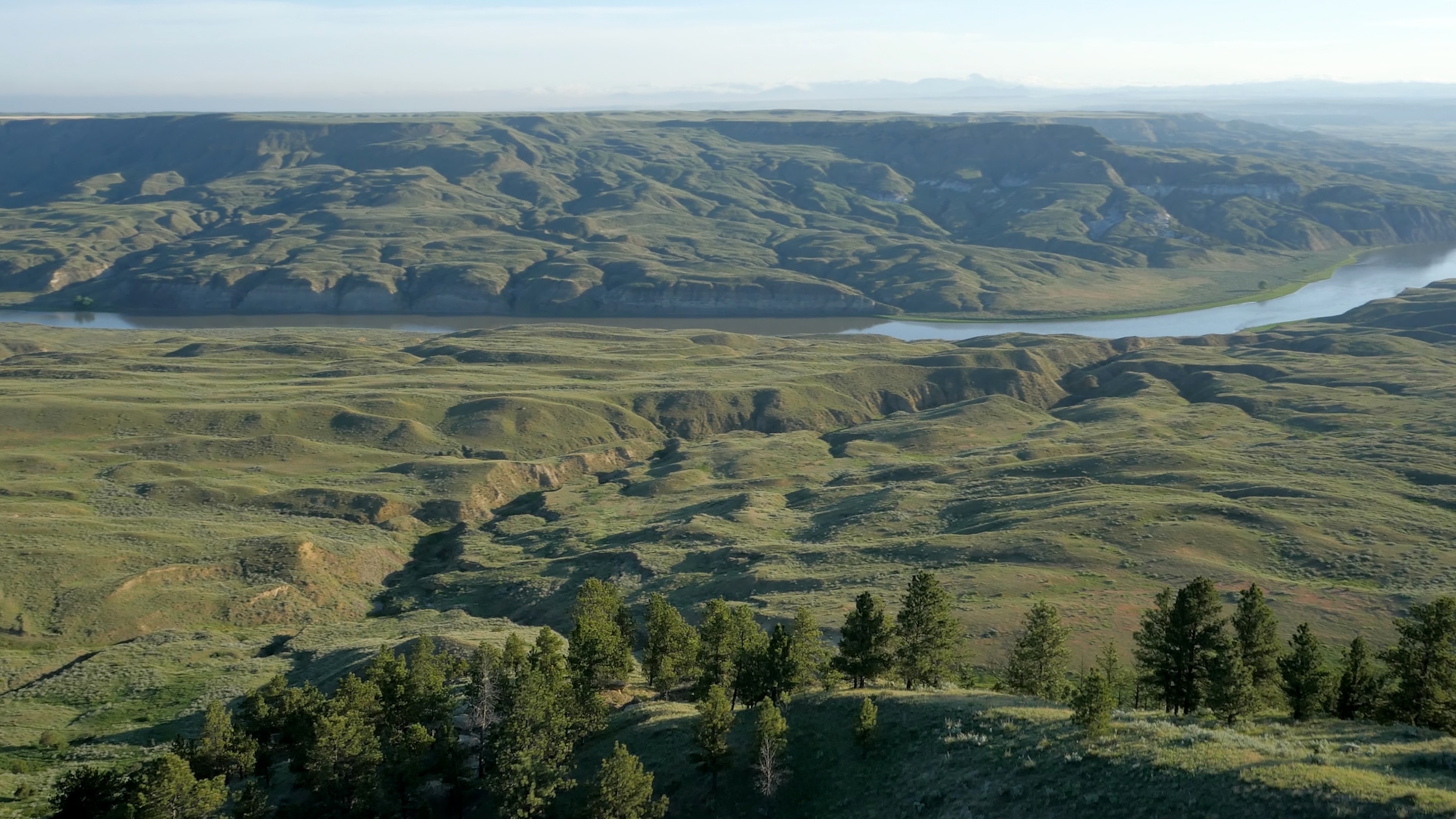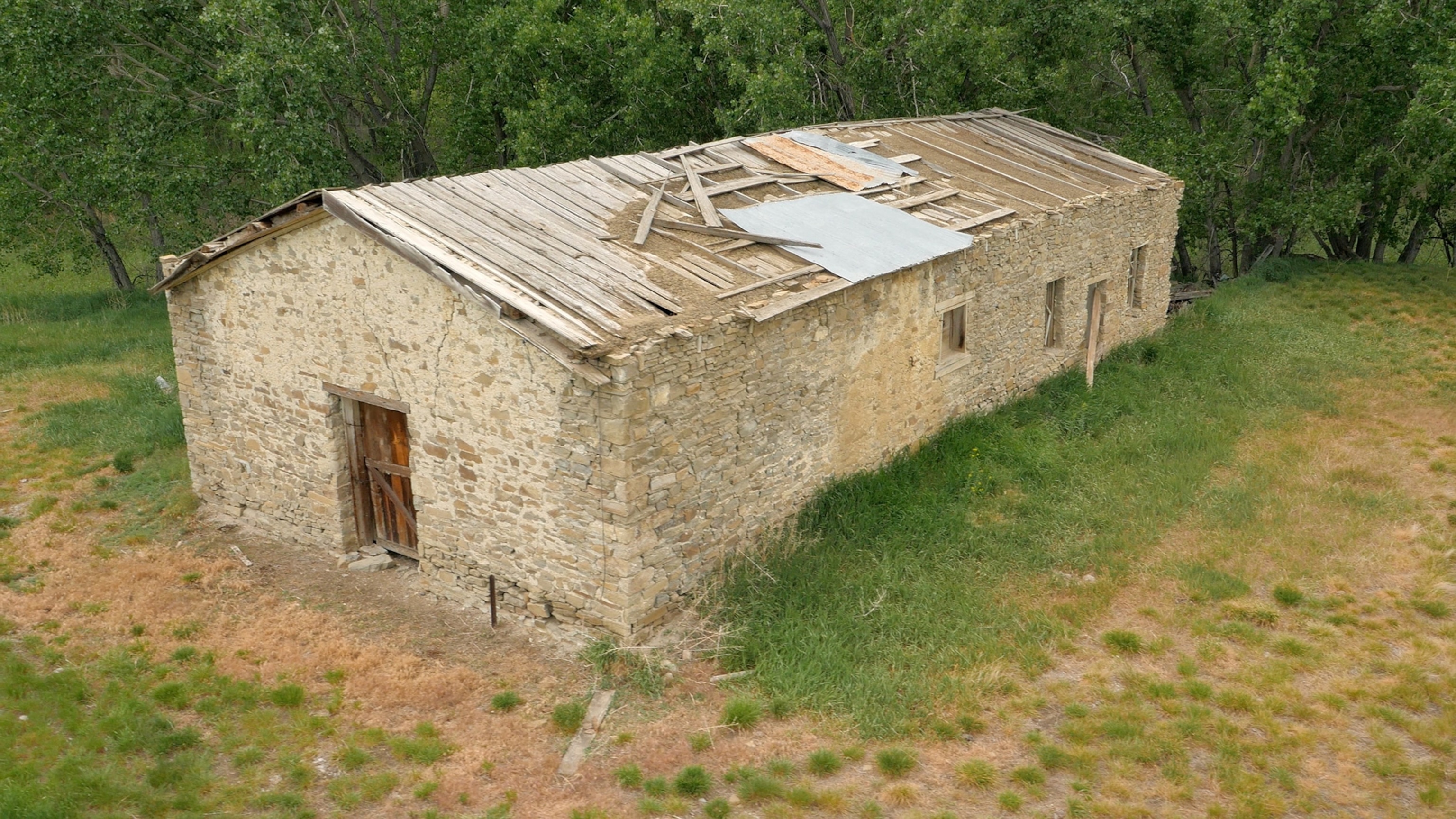
Huge Prairie Reserve Expands With Purchase of Historic Ranch
Montana's American Prairie Reserve gets a step closer to restoring wildlife habitat with the acquisition of historic property.
Visitors to Montana's American Prairie Reserve will soon be able to camp in the same scenic places as Lewis and Clark or stroll along the Judith River, which William Clark named for his wife-to-be in 1805.
"How cool is that?" asks Hilary Parker, the communications director for the nonprofit American Prairie Reserve.
On May 6, the reserve finalized the purchase of the historic PN Ranch north of Winifred, Montana. The 50,000-acre, working cattle ranch will be gradually transitioned from beef to a natural prairie, where bison and a host of other animals will roam.
The ranch adds a significant piece to the total 353,000 acres now owned or leased by American Prairie Reserve, in pockets around the northeastern part of the state. That makes it bigger than the cities of Phoenix or Nashville.
The nonprofit hopes to eventually manage 500,000 acres, in and around some 3 million acres of existing public land, notably the Charles M. Russell National Wildlife Refuge and Upper Missouri River Breaks National Monument.
Already home to elk and bighorn sheep and many smaller animals, the PN ranch is located mostly within the Upper Missouri monument, at the confluence of the Judith and Missouri Rivers.
"In addition to being a beautiful and historically significant property, it is of great import for wildlife migration patterns," says Parker. "It's going to be really key to boosting wildlife numbers out there."
The PN ranch predates the founding of the state of Montana by 20 years. Started by partners James Wells and T.C. Power in 1869, it has been managed as a ranch by various owners since. It contains a historic home and stone store that was built in 1884.

Before that, the ranch area was thought to host campsites for Blackfeet and other Native American groups. Lewis and Clark made camp there in 1805, on their historic voyage across the continent. Camp Cooke, Montana's first military post, was established there in 1866.
"Visitors to this special place will have a chance to connect with the land that helped form the spirit of this nation," American Prairie Reserve president Sean Gerrity said in a statement.
"We look forward to evaluating the recreation, restoration and historic preservation opportunities of this new area and sharing more about our plans in the near future,” added Garrity, who is also a National Geographic Explorer (read more about the project).
Although the American Prairie Reserve does not disclose information on prices or sellers, the ranch was previously owned by Whitney MacMillan, former Cargill Inc. CEO, and Matt Pierson of Highland Livestock Company of Livingston. The owners had listed the property for sale for as much as $20 million. Public records show the reserve now holds a mortgage for $14,901,782 on the property.
Not everyone in the surrounding community is pleased with the sale, and some have expressed concern about the coming shift in land use and the goal of returning bison and even bears and wolves to the property.
Winifred rancher Ron Poertner told the local Lewiston News-Argus that the sale “seems like a hostile takeover.”
Others have complained that the reserve encourages the return of prairie dogs, since they eat plants and dig holes. But Parker notes that ranchers who manage lands in ways that are friendly to wildlife can earn price premiums on their beef, through the reserve's Wild Sky Beef program. Acceptable actions include not shooting wolves or poisoning prairie dogs, and managing controlled burns to encourage native grass growth.
The ultimate goal of the reserve project is to bring back an intact, healthy prairie ecosystem, Parker says—an iconic American landscape that once dominated the West but has recently been altered and fragmented so much that some species have become critically endangered.
"Scientists say we need about 3.5 million acres to function as an intact prairie ecosystem," Parker says. "That's what wildlife and plants need for their security, especially in a changing climate."





